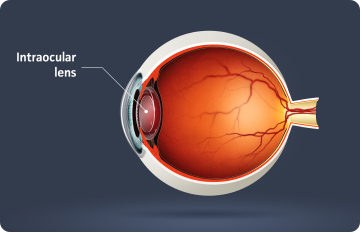Trust Your Eye Cataract Surgery to an Experienced Surgeon in the Field
Have you noticed blurry vision as you are getting older? If so, you may be developing cataracts, a clouding of the eye's natural lens.
Unfortunately, cataracts are a natural development in an aging eye and there is very little you can do to stop their progress. However, there is something you can do to restore your vision! Complete the contact form on this website or call 888-411-8857 to make an appointment to have a comprehensive eye exam. Medicare and many forms of insurance are accepted.
San Diego ophthalmologist, Dr. Alborzian, who is also an American Board of Ophthalmology Certified surgeon, can help reclaim the vision of your youth with cataract surgery.Eye Cataract Treatment
N-acetylcarnosine (nac) eye drops, stronger glasses or contact lenses do not provide reliable and effective treatment for eye cataracts. While drops may hold future promise, currently the only reliable treatment option available is cataract eye surgery. With recent advances, eye cataract surgery is now very safe, effective, and quick. When cataract surgery is performed, the aging cloudy lens of the eye is removed and replaced with a clear intraocular lens (commonly refered to as an IOL). At the Eye Center of La Jolla, we use the latest surgical technique, called phacoemulsification. It uses a small incision and does not require stitches. The cataract is broken apart using ultrasound before it is gently suctioned away. An IOL is then inserted through the same tiny incision and unfolds inside the eye. New IOL’s like the RESTOR, REZOOM, or CRYSTALENS® can correct many vision problems, which means some patients can have even better vision than they have enjoyed in many years.
How Eye Cataracts Create Blurry Vision
 A cataract is cloudiness (opacification) that develops within the natural lens of your eye. This blurry vision is a normal part of the aging process.
A cataract is cloudiness (opacification) that develops within the natural lens of your eye. This blurry vision is a normal part of the aging process.
Your eye's natural lens focuses light on your retina and allows you to see things sharply. The lens functions best when you are younger because it is crystal clear. As you age, the lens slowly turns yellow, then brown; it then becomes opaque and blocks the image entering the eye.
An analogy of a cataract is a window that is never washed. As dirt accumulates, the window loses its clarity, and it is no longer possible to see through it. Similarly, a cataract can progress to the point that vision decreases.
Age is not the only cause of cataracts, however. Other causes of cataracts include:
- Trauma or injury to the eye
- Certain medications, such as prednisone or cortisone
- Diabetes
- Hereditary predisposition - Sometimes people are even born with cataracts! Cataracts present at birth may be small and harmless or may be large enough to interfere with vision.
Signs that You May Have a Cataract
When you first develop a cataract, only a small portion of your eye's natural lens may be clouded and you may not notice the change in your vision. As the cataract grows and affects a larger part of your eye, you may start to detect problems with your vision.If you have a cataract, you may notice the following symptoms:
- Blurry or distorted vision
- Sensitivity to light and glare
- Seeing "halos" around headlights and other lights
- Difficulty focusing on objects
- Fading or yellowing of colors
Advanced Technology Lenses Bring You Clearer Vision
 Recently, an exciting milestone in cataract treatment was reached with the introduction of the advanced technology lenses (ATLs). These intraocular lenses allow for simultaneous distance and near vision without the use of eyeglasses.
Recently, an exciting milestone in cataract treatment was reached with the introduction of the advanced technology lenses (ATLs). These intraocular lenses allow for simultaneous distance and near vision without the use of eyeglasses.
This means that after cataract surgery, you could have complete freedom from the dependency on glasses for clear vision.











